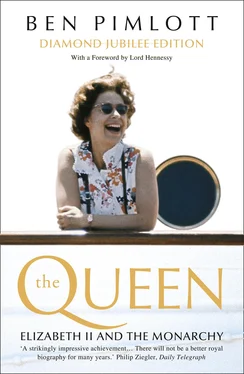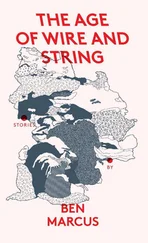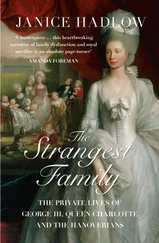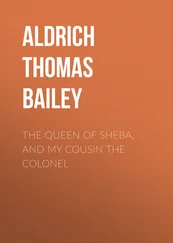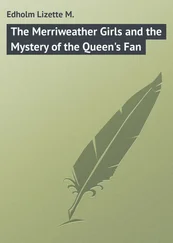It was not just in Wales, however, that there was an upsurge of feeling in favour of Elizabeth. As the war entered its final phase, she found herself an emblematic heroine everywhere. All over the Empire, the health, beauty and emerging womanhood of the Princess were linked to the eagerly anticipated future, in which families would be brought together, sweethearts rejoined, babies born, bellies filled and freedom enjoyed. Encouraged by broadcasters and newsreels, young people took a special interest in her. On the Welsh tour, she caused particular excitement among children. In Valletta, on the island of Malta, a thousand school children assembled a few weeks before the Normandy landings to see and cheer a special film depicting scenes from her life. 73
Requests for public appearances by the Princess now became frequent. For the time being the Palace was adamant: there could be no question of ‘independent engagements,’ though she might occasionally accompany her parents, as to South Wales. 74Soon, however, this rule was relaxed. On 23 May 1944, Princess Elizabeth spoke publicly for the first time at the annual meeting of the Queen Elizabeth Hospital for Children in Hackney. In the autumn, she accepted an invitation to launch HMS Vanguard , the largest battleship ever built in the British Isles. The ceremony, in Clyde shipyards, was followed by a luncheon at which she read a short speech. The First Lord of the Admiralty, A. V. Alexander, wrote to Lascelles afterwards describing ‘the clear and decisive way’ in which she carried out both duties. 75
There remained the question of whether she would enter one of the women’s services, and if so, which. Early in 1945, it was decided that she would join the Auxiliary Territorial Service. It was not the obvious choice. In view of her family’s naval traditions, the WRNS would have been more natural. The King and Queen were apparently reluctant: there is no reason to doubt Crawfie’s account of an eager and determined young woman wearing down the resistance of her parents. 76At the end of February she was registered as No. 230873 Second Subaltern Elizabeth Alexandra Mary Windsor. The rank was an honorary one, but the training in driving and vehicle-maintenance she underwent at No. 1 Mechanical Transport Training Centre at Aldershot, was genuine. She enjoyed this sole, brief experience of communal education. Several decades later, she told the Labour politician Barbara Castle that it was the only time in her life when she had been able seriously to test her own capabilities against those of others of her age. 77After six weeks she qualified as a driver, and at the end of July, a few days before the final end to the war, she was promoted to Junior Commander.
‘The Princess is to be treated in exactly the same way as any other officer learning at the driving training centre,’ maintained the official report at the outset. 78To back this up, the Queen requested that photographers should not be given any facilities. 79This, however, did not deter the press, and during her short stay at the Centre she was photographed more intensively than at any time since the Coronation. As a result, she was scarcely just one of the girls. If it was not quite true, as a 1957 assessment put it, that ‘the rule of seclusion was maintained and she did not mix with her fellows on the course,’ 80the extent of mucking in, on equal terms, was limited. She kept to the routine of the ATS mess, took her share of duties, and acquired the basics of driving, car mechanics and maintenance. But she returned to Windsor every night to sleep. She also became an unwitting mannequin for the uniform of the service – pictures of her with a spanner, at the wheel of a lorry, leaning on a bonnet, or peering purposefully and fetchingly under one, appeared in the newspapers and magazines of every Allied nation.
In such matters, it was always impossible to disentangle a private motive from the public effort. Since the enrolment of a royal princess could not be kept secret, her participation in the ATS inevitably became part of the morale-boosting display of the Monarchy. It was a similar story with other initiatives that started spontaneously. A particularly striking and, in its way, sad example of the way Royal Family behaviour spilled over from the personal to the public, so that domestic events were turned into courtly contrivance, was provided by a series of Christmas shows put on during the war by Windsor children, with the aid of adult mentors, and performed in front of parents and other members of the Castle community.
These began modestly in 1940 with a simple play, ‘The Christmas Child,’ in St. George’s Hall, with Elizabeth playing one of the three kings, flanked by two boy evacuees. The occasion was enjoyed by everybody, and the princesses, who had been on stage since birth without knowing it, discovered an interest in, and even a talent for, amateur theatricals. The following Christmas, the stakes were raised slightly, and a pantomime, ‘Cinderella,’ was written for them by a local schoolmaster. Again it was a success, and once again there was a good deal of democratic sharing of tasks and banter in the preparations and rehearsals. The next year, they put on ‘Sleeping Beauty,’ and Lisa Sheridan described how Princess Elizabeth ‘took the arms of the two “sailors” and sang “Mind Your Sisters”’ and brought the house down. 81The tradition continued, giving pleasure to both performers and audience, which always included the princesses’ parents. Horace Smith, who attended the pantomimes of 1942–4, recalled seeing the elder princess ‘full of confidence and vigour,’ and reducing the King to hearty laughter. 82The humour depended a lot on puns. ‘There are three acres in one rood,’ Widow Twankey, an office boy from the Castle, was required to say in the 1943 production of ‘Aladdin’. ‘We don’t want anything improper,’ replied Margaret. ‘There’s a large copper in the kitchen,’ said the Widow. ‘We’ll soon get rid of him,’ declared Elizabeth – and so on. 83
Year by year, the performances became more polished, with increasingly elaborate costumes and sets. It was also established, as Court etiquette apparently required, that if the King and Queen were to attend, their daughters should have leading parts, regardless of the acting ability of the evacuees and village children who were also involved. Consequently, attention focused on the royal children and their skills, even more than would have been true in any case. Meanwhile audiences grew, bringing in large numbers of locally-based guardsmen and ATS girls. In 1943, there were three performances, including one specifically for soldiers. The show also became publicly known. Weeks before the 1943 pantomime, advance publicity produced a flood of inquiries, and more than a thousand would-be ticket holders sent in applications containing blank cheques. All were politely refused. 84However, those denied entry could still learn about the show second-hand, for reports appeared in the press. Particular interest was aroused by ‘Aladdin’ in 1943, in which the Heiress Presumptive, cast in the title role, and wearing utility shorts and top, performed a tap dance, and in one scene appeared as a charlady, in an apron of sackcloth. ‘From the moment Princess Elizabeth popped out of a laundry basket,’ enthused the Sunday Graphic , ‘the King and Queen and the audience of 400 laughed and thoroughly enjoyed the show.’ 85After seeing the last of the three performances, Lascelles wrote in his diary that the principals and chorus alike would not have disgraced Drury Lane. ‘P’cess Eliz. was a charming Aladdin’, he noted, ‘and P’cess M. a charming and competent Princess Roxana’. 86Altogether the pantomime netted £200.
The final pantomime, at Christmas 1944, starred the Heiress Presumptive as a Victorian seaside belle. It also included a carefully choreographed ‘ballet interlude,’ arranged by the dancing mistress at Buckingham Palace. 87By this time, however, it had been transformed into an ambitious, semi-professional extravaganza, widely discussed as an established rite, and, in effect, part of the public relations of royalty.
Читать дальше
